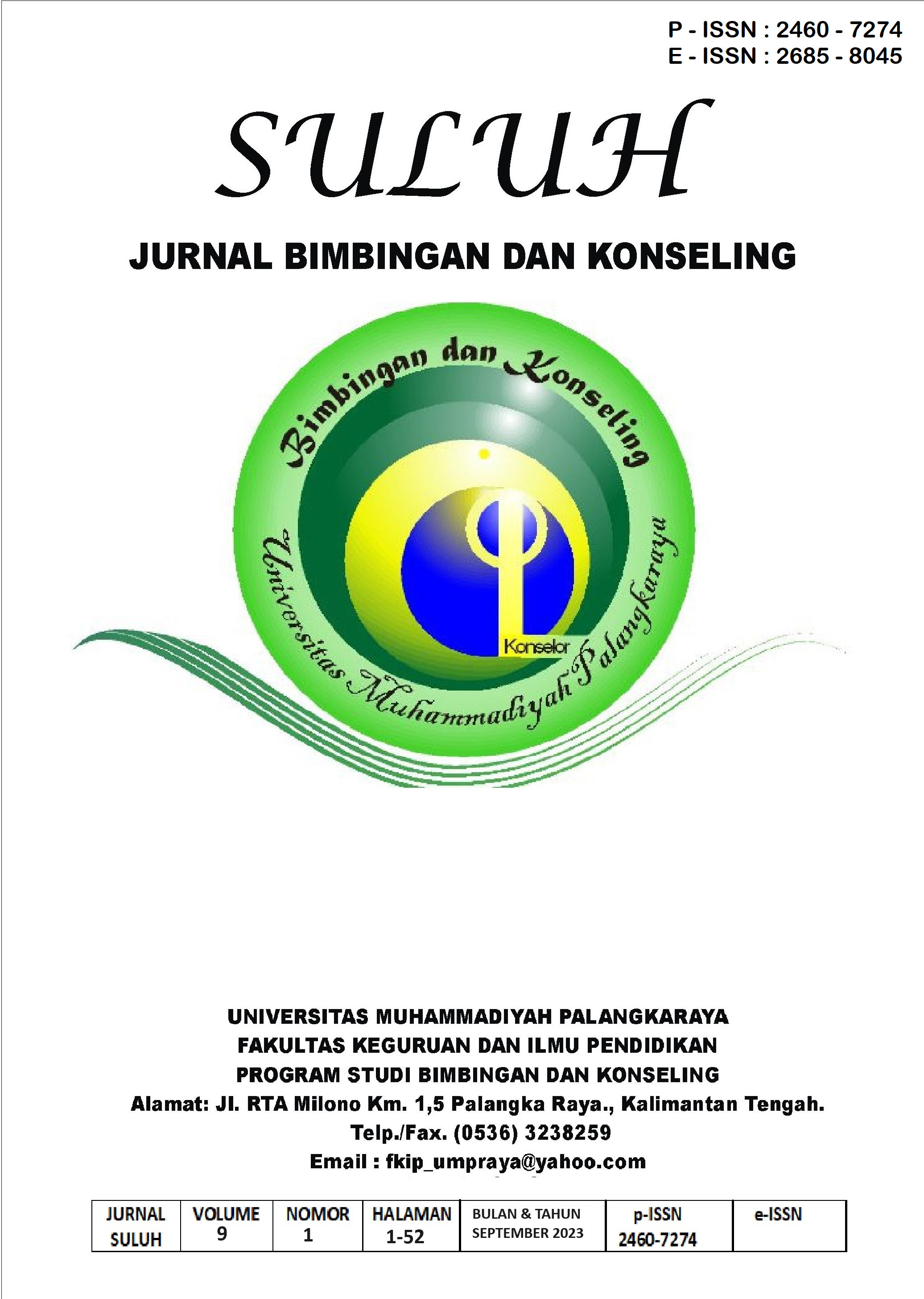The Role of Counseling Teachers in Guiding Negative Behavior (Early Youth) of Grade IX Students Madrasah Tsanawiyah of Darunna'im
Main Article Content
Abstract
Adolescence is a transitional period of development and growth faced by children aged 15/16 years due to various physical, social and emotional changes, all of which will cause anxiety and discomfort. As a result. This period is also known as a period full of storms and pressure, because teenagers must learn to adapt and accept all the changes that often cause emotional upheaval in them. If the activities carried out by adolescents with their peers are inadequate to meet the demands of their energy fluctuations, adolescents often release their excess energy in a negative direction. This can happen because the environment is often not in accordance with inner desires or expectations, so that a person feels disappointed due to an imbalance between expectations and reality. Therefore, individuals who are in their teenage years especially early adolescents, need adjustments to these changes in tasks and roles so that adolescents feel that they are accepted by the environment and can adapt well to situations of environmental expectations. And as a BK teacher, you have to properly guide early youth so that they have a directed future. So the purpose of this study is: 1) to know the various behaviors of early adolescents. 2) knowing the factors behind early adolescent behavior. 3) to know the role of the counseling teacher in guiding the behavior of early adolescents. In this research method using qualitative methods, all existing data were analyzed using interviews, observation, and documentation.
Downloads
Article Details

This work is licensed under a Creative Commons Attribution-ShareAlike 4.0 International License.
All rights reserved. This publication may be reproduced, stored in a retrieval system, or transmitted in any form or by any means, electronic, mechanical, photocopying, recording.
References
Diananda, A. (2019). Psikologi Remaja Dan Permasalahannya. Journal ISTIGHNA, 1(1), 116–133. https://doi.org/10.33853/istighna.v1i1.20
Auliya, A., & Irman, I. (2023). Peran Pengasuhan Santri Dalam Kegiatan Layanan BK Kelompok Pada Santri Indisipliner: The Role Of Santri Care In Group BK Service Activities In Indisipliner Student. Suluh: Jurnal Bimbingan Dan Konseling, 8(2), 81–87. https://doi.org/10.33084/suluh.v8i2.4565
Drajat, Z. (1989). Ilmu Jiwa Agama. PT. Bulan Bintang.
Hamzah, I., & Pemasyarakatan, P. I. (2020). Psikologi klinis dalam konteks pemasyarakatan (Issue July).
Hardiyanto, S., & Romadhona, E. S. (2018). Remaja dan Perilaku Menyimpang (Studi Kasus Remaja di Kota Padangsidimpuan). Jurnal Interaksi : Jurnal Ilmu Komunikasi, 2(1), 23–32.
Hertika, Nanda Putri. Fathra, Annis Nauli. Riri, N. (2015). Faktor–Faktor Yang Berhubungan Dengan Perilaku Bullying Pada Remaja. 2(2).
Ihsan, K., Jonyanis, D., & Si, M. (2016). FACTORS CAUSE OF CHILDREN CRIMINAL ACTION (case study of prisons pekanbaru class II B). Jom Fisip, 3(2), 1–15.
Karlina, L. (2020). Fenomena Terjadinya Kenakalan Remaja. Edukasi Nonformal, 1(2), 147–158.
Laila, F. N. (2017). Bimbingan Konseling Keluarga Dan Remaja, Edisi Revisi (revisi). UIN Sunan Ampel Pres.
Masril. (2017). Konseling post-traumatic stress disorder dengan pendekatan “Terapi Realitas.” Prosiding Internasional Seminar & Workshop Post Traumatic Counseling, 1(1), 184–192.
Prabowo, B. A., & Karyono, K. (2015). Gambaran Psikologis Individu Dengan Kecenderungan Kleptomania. Jurnal Psikologi Undip, 13(2), 163–169. https://doi.org/10.14710/jpu.13.2.163-169
Putra, A. R. B. (2015). Peran Guru Bimbingan Konseling Mengatasi Kenakalan Remaja di Sekolah. Pedagogik: Jurnal Pendidikan, 10(1), 32–39. https://doi.org/10.33084/pedagogik.v10i1.597
Sary, Y. N. E. (2017). Perkembangan kognitif dan emosi psikologi masa remaja awal. Jurnal Pengabdian Kepada Masyarakat, 01(01), 6–12.
Yuliani, S., Widianti, E., & Sari, S. P. (2018). Resiliensi Remaja Dalam Menghadapi Perilaku Bullying. Jurnal Keperawatan BSI, 6(1), 77–86.

